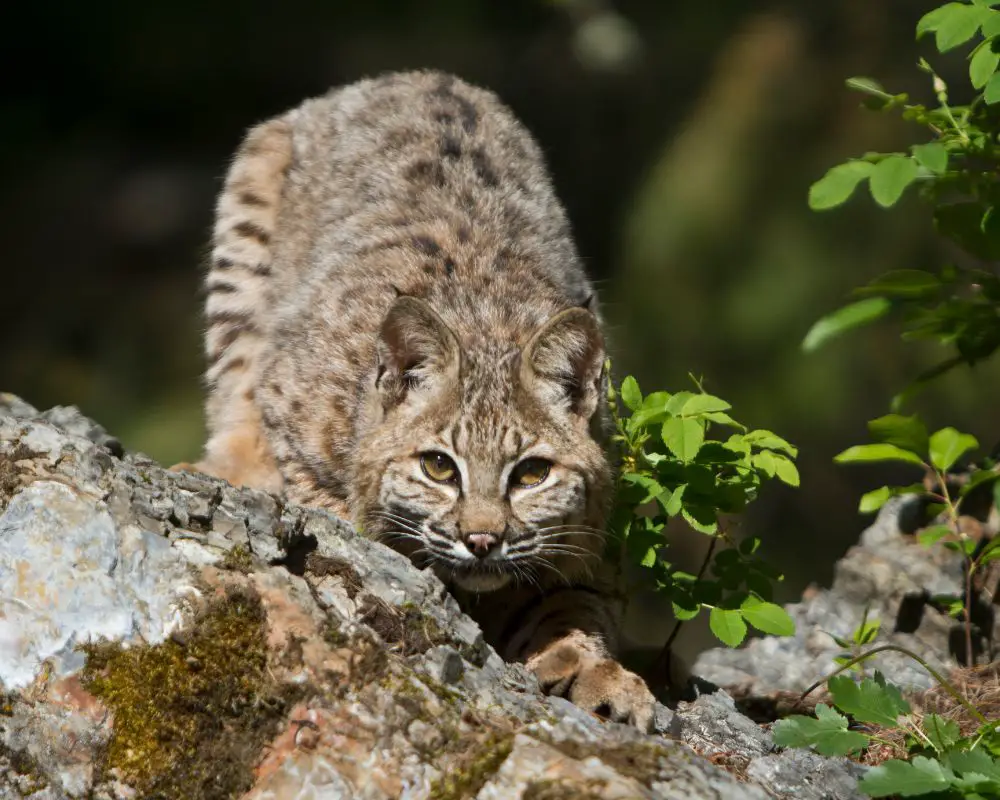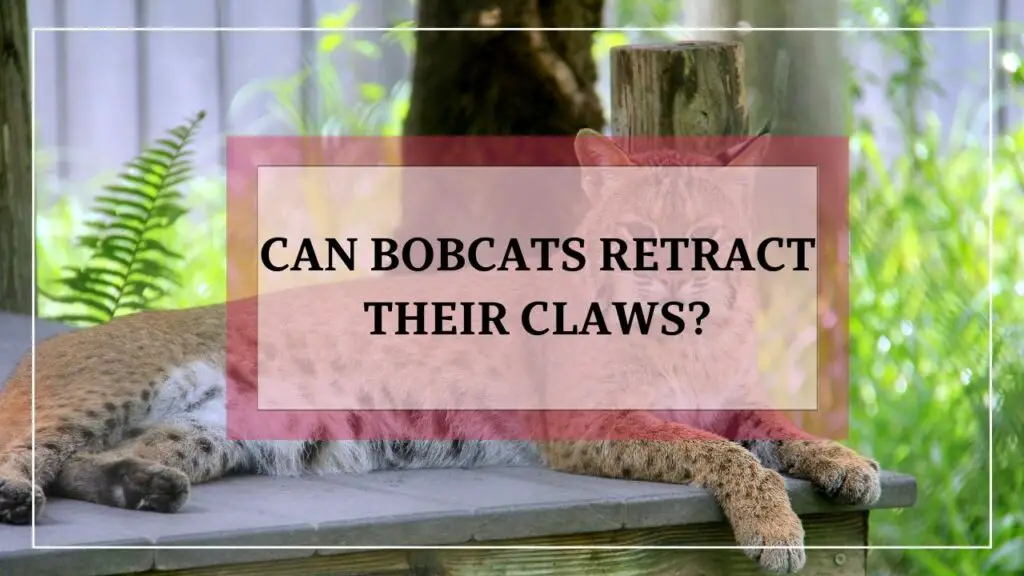If you’ve ever seen a bobcat in the wild, you’ve likely been struck by its powerful and nimble movements. These fierce predators are built for agility and speed, with a lean body, tufted ears, and piercing green eyes. But what about their claws? Are they retractable, like a domestic cat’s, or permanently extended, like a dog’s? As an animal enthusiast, it’s important to understand the unique features of the animals you admire, which is why we’re diving into the question of bobcat claws in this post.
In this post, we’ll explore the question of whether bobcats can retract their claws, examining the latest research studies and video evidence. By the end of this post, you’ll have a deeper understanding of these elusive predators and their impressive physical abilities. Whether you’re a longtime bobcat enthusiast or just starting to learn about these fascinating animals, this post is for you.
While bobcats don’t have fully retractable claws like domestic cats, they have semi-retractable claws that allow them to maintain better traction on different surfaces while still being ready to hunt. This unique adaptation is just one aspect of the fascinating physical abilities of this wild cat species.
Bobcat Anatomy

To understand bobcat claws, it’s helpful to first have a basic understanding of their anatomy. Bobcats are medium-sized wild cats, with a range of physical features that help them thrive in a variety of habitats.
Overview Of Bobcat Physical Features
Bobcats are about twice the size of a domestic cat, with a weight range of around 15-35 pounds. They have short, reddish-brown fur with black spots and a short tail with a black tip. Their eyes are large and yellow or green, with excellent night vision.
Focus On Paws And Claws
Bobcat paws are one of their most distinctive features, designed for balance and traction. Each paw has four toes, with retractable claws that can extend up to an inch beyond the toe pads. These claws are sharp and curved, making them ideal for grasping prey and climbing trees.
Comparison To Domestic Cat Anatomy
While domestic cats and bobcats are both felines, there are some notable differences in their anatomy. Domestic cats have retractable claws, which they use for both hunting and defense. Bobcats, on the other hand, have semi-retractable claws that are always partially extended, allowing them to maintain better traction on different surfaces.
Understanding Claw Retraction
Before we dive into whether bobcats can retract their claws, let’s take a closer look at what claw retraction actually means.
Explanation Of What Retractable Claws Are
Retractable claws are a unique feature of some feline species, including domestic cats and some wild cats like cheetahs. These claws are able to retract into sheaths, which are located at the base of the toe pads. This allows the cat to keep the claws sharp and protected when they’re not needed, like when they’re walking or sleeping.
Discussion of Animals With Retractable Claws
In addition to cats, there are a few other animals that have retractable claws. These include some members of the weasel family, like ferrets and otters, as well as some species of lizards and birds.
Comparison To Non-Retractable Claws
Many animals, including dogs, bears, and birds of prey, have non-retractable claws that are always extended. These claws are usually thicker and blunter than retractable claws and are designed for digging, climbing, or grasping prey.
By understanding the different types of claws that exist in the animal kingdom, we can begin to appreciate the unique adaptations of each species. But where do bobcats fit in? Let’s explore whether they’re able to retract their claws in the next section.
Bobcat Claws: Semi-Retractable or Non-Retractable?
So, can bobcats retract their claws like domestic cats, or do they have non-retractable claws like dogs? The answer is a bit more nuanced than you might expect.
Bobcat Claw Anatomy
As we mentioned earlier, bobcats have semi-retractable claws. This means that their claws are not fully retractable like those of domestic cats, but they’re also not always fully extended like those of dogs. Instead, bobcats are able to control the extension and retraction of their claws to some extent.
Purpose Of Semi-Retractable Claws
Bobcats have evolved semi-retractable claws that are always partially extended because it provides several advantages for their survival. One of the most significant advantages is that the claws provide better traction on different types of terrain. By keeping their claws partially extended, bobcats are able to grip surfaces like trees or rocky outcroppings more easily. Additionally, having their claws partially extended allows them to be ready for any potential prey that might cross their path.
Importance Of Claws for Hunting
Bobcats rely on their sharp claws to catch and hold onto prey. Their claws are sharp and curved, which allows them to easily grasp prey and maintain their grip while they bring it down. They also use their claws for climbing and balance, making them a crucial aspect of their hunting strategy.
Bobcat Claws in Action

Now that we know a bit more about the anatomy of bobcat claws and their ability to partially retract, let’s explore how bobcats use their claws in their daily lives.
Hunting With Claws
As we mentioned earlier, bobcats use their sharp claws for hunting. They are carnivorous and will hunt a variety of prey. When they locate their prey, they will stealthily approach it and use their claws to catch and hold it down. Their sharp claws make it difficult for the prey to escape, allowing the bobcat to quickly and efficiently dispatch its target.
Climbing With Claws
Bobcats are skilled climbers, and they use their claws to help them navigate up and down trees or other structures. By keeping their claws partially extended, they can easily grip onto bark or rough surfaces, giving them more traction and allowing them to move more easily. Their claws also help them to balance and maintain their position while climbing.
Defending With Claws
While bobcats are generally solitary and avoid human contact, they are still wild animals that may feel threatened or cornered. In such situations, they may use their sharp claws as a means of defense. They can deliver quick, powerful swipes with their front paws, causing serious damage to a perceived threat. Fortunately, bobcats rarely attack humans unprovoked, and they will usually flee if given the opportunity.
Claws In Captivity
Unfortunately, many bobcats are taken from the wild and kept in captivity, often for use as pets or in roadside zoos. In these situations, their claws may be declawed or removed, which can lead to a host of problems for the animal. Without their claws, bobcats may have difficulty hunting or climbing and may become more aggressive due to their inability to defend themselves.
FAQs
How Can You Tell The Difference Between A Coyote And A Bobcat Track?
Coyote and bobcat tracks can be difficult to distinguish from one another, but there are some key differences to look out for. Coyote tracks are generally larger and more rounded than bobcat tracks, with four symmetrical toes and claws that are usually visible. Bobcat tracks, on the other hand, are generally smaller and more oval in shape, with four toes that are asymmetrical (the two central toes are more giant) and often without visible claws. Additionally, coyotes tend to travel in straighter lines than bobcats, which often move in a more meandering pattern.[1]
Do Bobcats Have 4 Or 5 Toes?
Bobcats typically have four toes on their front paws and four toes on their back paws. However, they may also have a small fifth toe, known as a dewclaw, on their front paws. The dewclaw is set higher up on the paw and does not make contact with the ground when the bobcat is walking, so it is not always visible in tracks.

